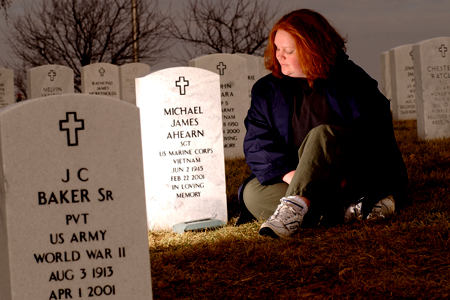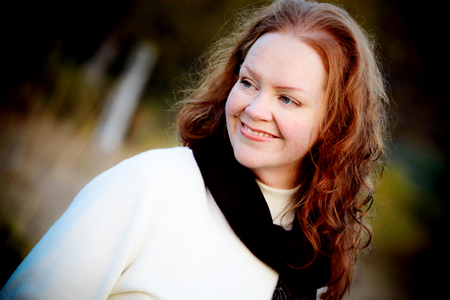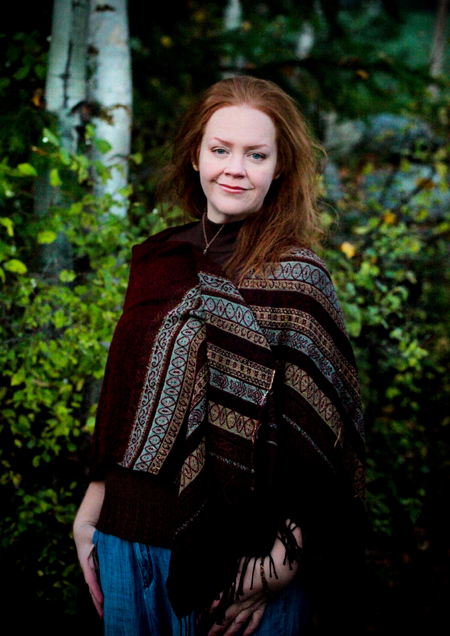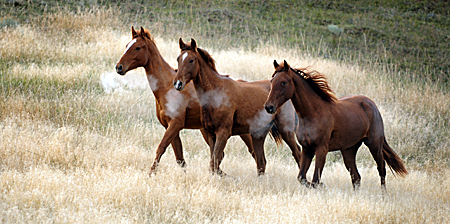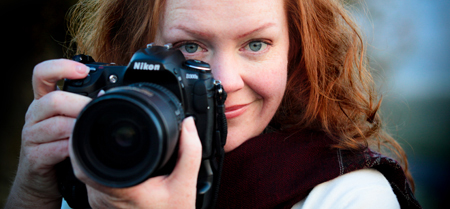 I have been a professional photographer for nearly 12 years now. In all that time I have seldom been on the other side of the lens. Every once in a while I have done a self-portrait — just for fun. I remember having a toy Nikon that could flip around in an odd way and I could take my own picture, that was fun. Or I would set up my camera, get the composition just so, then run to get myself into place before the timer fired the shutter for me. Those were always fun. One of my favorites where I set up the camera and ran is a shot of me in Ireland. I took this portrait of myself at the Cliffs of Moher. If you look really closely, you’ll see that my eyes are shut. Dang it.
I have been a professional photographer for nearly 12 years now. In all that time I have seldom been on the other side of the lens. Every once in a while I have done a self-portrait — just for fun. I remember having a toy Nikon that could flip around in an odd way and I could take my own picture, that was fun. Or I would set up my camera, get the composition just so, then run to get myself into place before the timer fired the shutter for me. Those were always fun. One of my favorites where I set up the camera and ran is a shot of me in Ireland. I took this portrait of myself at the Cliffs of Moher. If you look really closely, you’ll see that my eyes are shut. Dang it.
There is a series of photos my friend Leah took of me one year when I went to visit her in Oregon. I found the prints, but I can’t seem to find the digital files tonight. So I will pass on those for tonight.
The single most amazing photo ever taken of me is an image by one of my best friends and also my photography mentor Tim Webb. This photo was taken of me days after my mother’s funeral.
Because my father served in Vietnam he is buried in Camp Nelson National Cemetery. I have always loved military cemeteries. The perfect rows of gleaming white headstones. Of course, who would expect anything less that orderly and uniform from the military? The way things work at Camp Nelson, a wife can be buried with her husband. I suppose the rule is a spouse can be buried with his or her spouse. In my case the veteran is my father, so his information is carved on the front of the stone. My mother, who is listed as “his wife” has her name, dates and info carved on the back of the stone.
I was in a pretty raw place emotionally at this time. Both of my parents dead within two years. It was unfathomable for me. Tim was great. I can’t remember if these photos were his idea, I think they must have been, but I really can’t remember… Anyhow, my time in Kentucky was running out. Soon I would have to get back to my job and my life in Kansas. But before I went, we went out to Camp Nelson and Tim did a series of photos of me there. This was the first time I was ever the subject of an “editorial portrait.” A portrait specifically intended to be a story-telling photo. I remember the night he did these photos so clearly. What I treasure most is the memory of being able to drop my guard and let Tim take this because I trust him. To let another person in when emotions are running that high is difficult. It’s hard for the subject of the photograph and speaking for myself, it’s hard to be the photographer as well. But when you have someone you can trust, opening up becomes at least possible. Truth has at least the potential to be revealed. And sometimes a rare moment is captured and can be held onto. This photo is one of the decisive moments of my life. I cherish it.
But that was 2003 and since then I haven’t been photographed much. I avoid being the subject of a photo. Ironic since I spend my life aiming the camera at other people, but there it is. I finally decided it was time to change that. So, last week I contacted my friend and fellow photographer Kat Gebauer and asked her to take some portraits of me. Kat and I had team photographed Jesse’s wedding just a few weeks ago and I like both Kat and her work. It just felt right. It felt like it was time. Kat graciously agreed to be my photographer and on Saturday morning we met in Whitefish for an early morning portrait session.
 It’s 7:45 up at the golf course in Whitefish. The day prior Kat and I had both considered canceling and rescheduling because a winter storm was coming in and on Friday morning at 9 a.m. it was still just a few degrees lighter than pitch black. As luck would have it we kept the time and we were treated to a an incredible sunrise. It was the perfect morning for photos. The sun was mostly muted by the deep fog that rolled in over the lake.
It’s 7:45 up at the golf course in Whitefish. The day prior Kat and I had both considered canceling and rescheduling because a winter storm was coming in and on Friday morning at 9 a.m. it was still just a few degrees lighter than pitch black. As luck would have it we kept the time and we were treated to a an incredible sunrise. It was the perfect morning for photos. The sun was mostly muted by the deep fog that rolled in over the lake.
This thumbnail image of the lake, that’s all I have from that morning. I wasn’t out there to take photos, I was there to have my picture taken. I wanted these photos for my website. I still need to join Facebook. Lord have mercy on me I have been avoiding this, but more and more it becomes apparent, there is no escaping social networking. I figured a new set of portraits would be a good idea for my soon-to-exist facebook page. And I wanted to have these done as a kind of personal celebration. Still a documentation of my life, only this time, I had to trust another photographer to be the eyes behind the shots.
I love Kat’s photos. I am so pleased with these. And so of course, here they are with a home on my blog. This was a good reminder for me. It’s so easy for me to aim a camera that I sometimes forget how hard it can be to have a camera aimed at you. Kat was wonderful and she made this pretty easy for me, but still…it is worth remembering that being the subject is not all that easy. I have found myself approaching my subjects this week with a renewed respect for how hard it is to be the one on the other side of the lens. I hope I can reach out to the people I photograph and offer them the kind of trust that I found when Tim photographed me. It’s only when a person’s guard is down that they really let themselves be seen.
